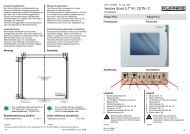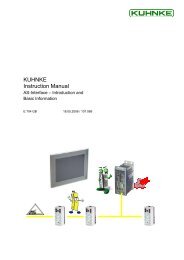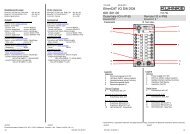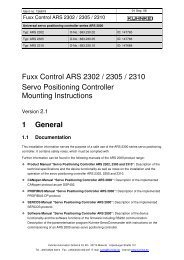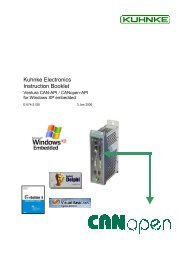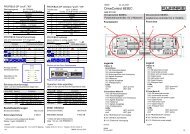CANopen Basics Instruction Manual pdf - Kuhnke
CANopen Basics Instruction Manual pdf - Kuhnke
CANopen Basics Instruction Manual pdf - Kuhnke
Create successful ePaper yourself
Turn your PDF publications into a flip-book with our unique Google optimized e-Paper software.
<strong>CANopen</strong> <strong>Basics</strong><br />
7.2.1 Bus Allocation by Bit-wise Arbiting<br />
Message A<br />
Message B<br />
Message C<br />
Fast data transfer via a serial bus demands fast bus allocation<br />
mechanisms to decide which one of several parallel<br />
transfer requests is served first. In the case of CAN, the<br />
identifier of a message is the means to provide this<br />
mechanism. The identifier with the lowest number to it has<br />
the highest priority. The priorities are defined by setting<br />
the appropriate binary values at the system design stage;<br />
these values cannot later be changed dynamically.<br />
How bus conflicts are avoided<br />
Conflicts on the bus are avoided by bit-wise arbiting and<br />
the identifiers in that every station monitors the bus signal<br />
level with every bit. The dominant status (0) overwrites the<br />
recessive status (1). All stations transmitting at a recessive<br />
signal level while monitoring the bus at a dominant<br />
level will lose the fight and automatically turn into recipients.<br />
This simple mechanism ensures that the message<br />
with the highest priority will be automatically transferred<br />
across the bus.<br />
Example:<br />
Identifier Data<br />
10 9 8 7 6 5 4 3 2 1 0<br />
Messages A and B will be denied access to the bus because<br />
message C has higher priority (identifier). The relevant<br />
slaves will turn into recipients.<br />
88 E 615 GB<br />
06.02.2008



